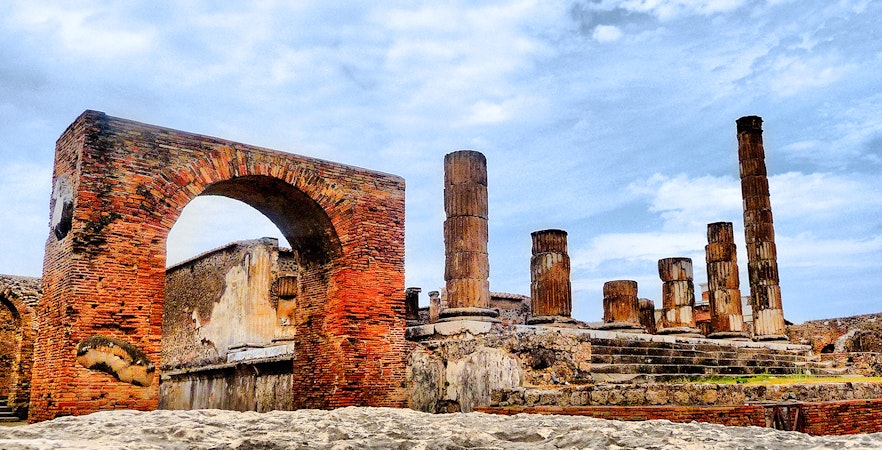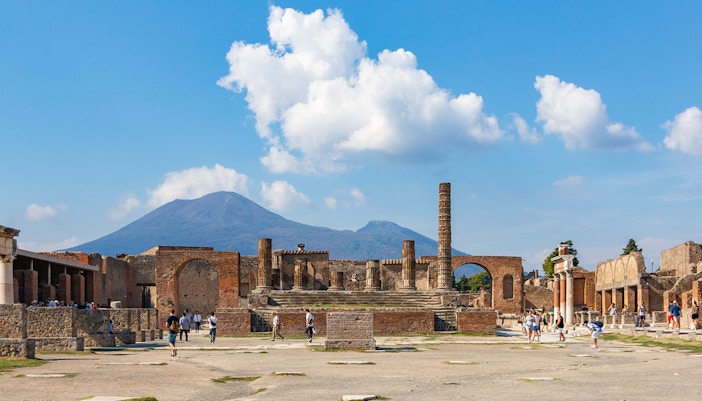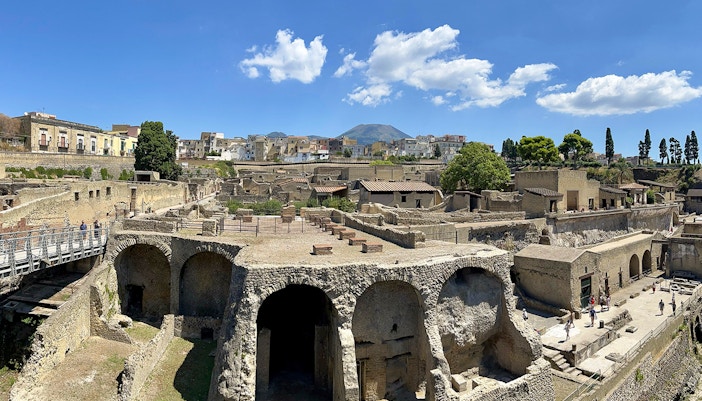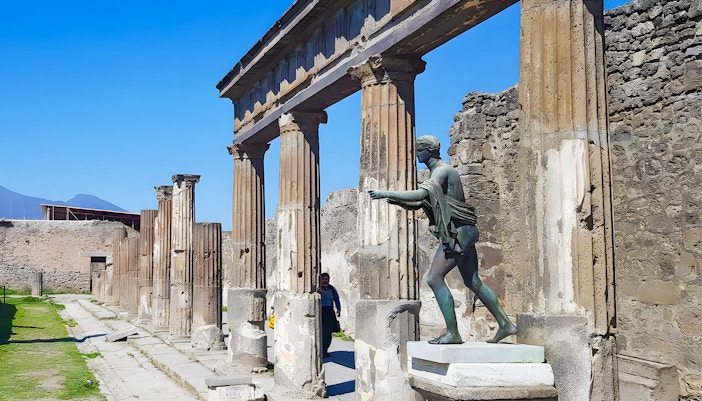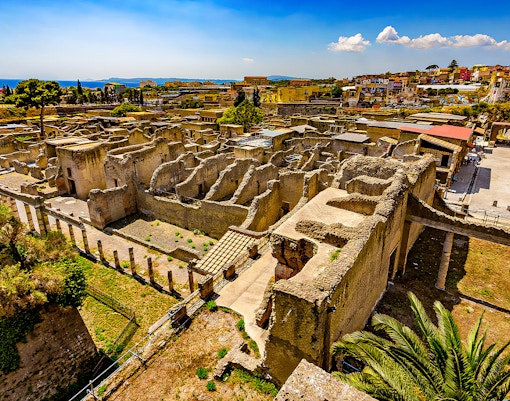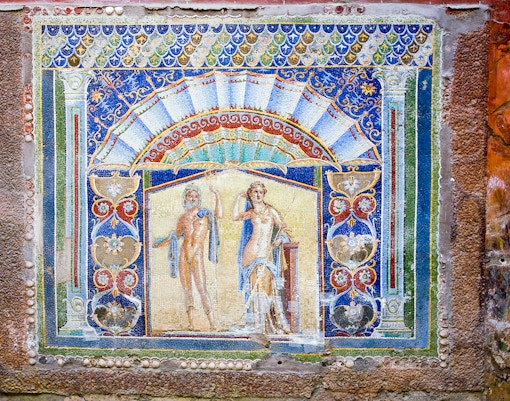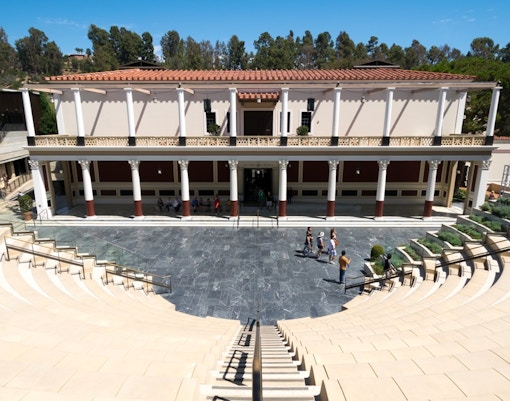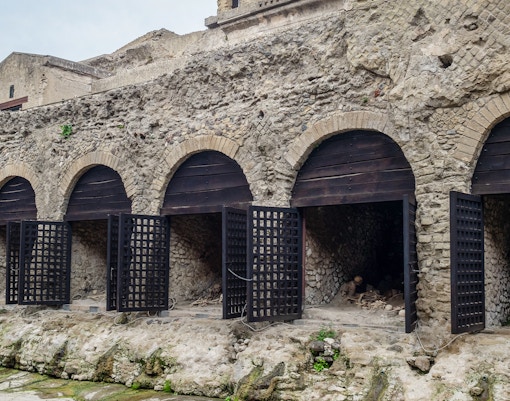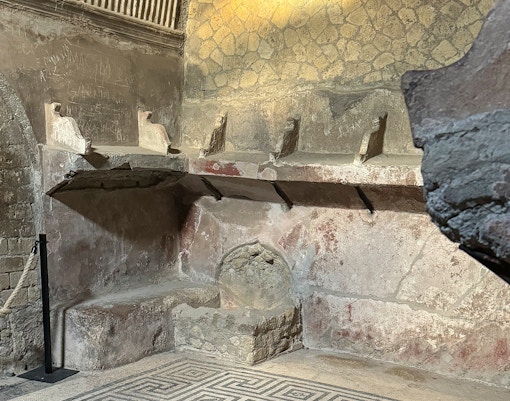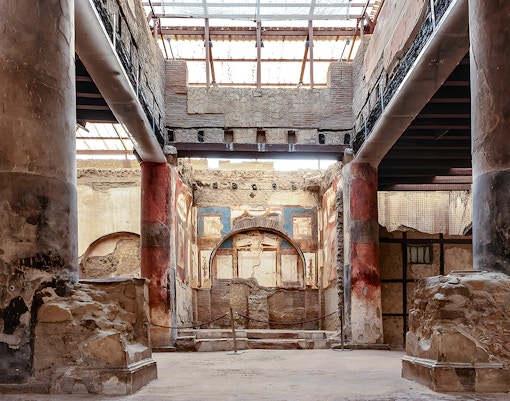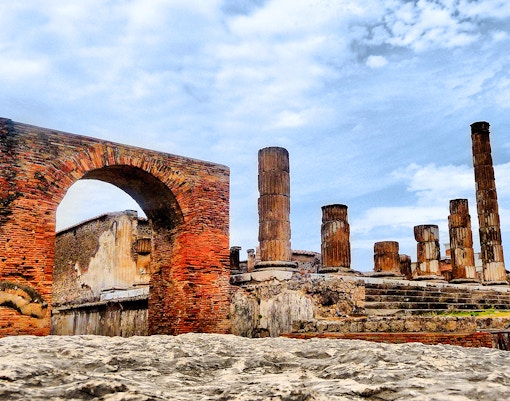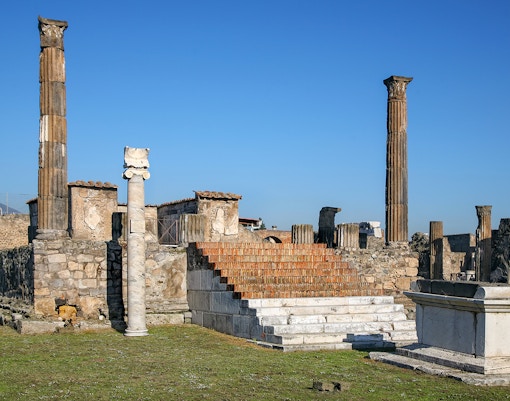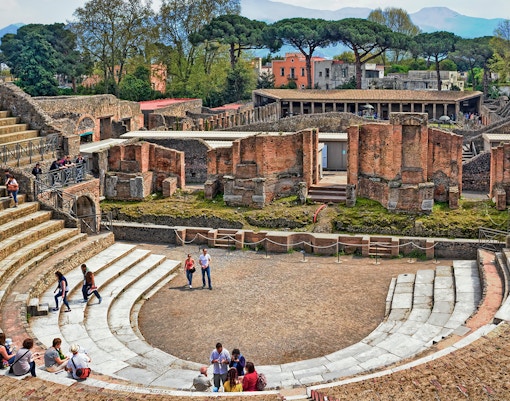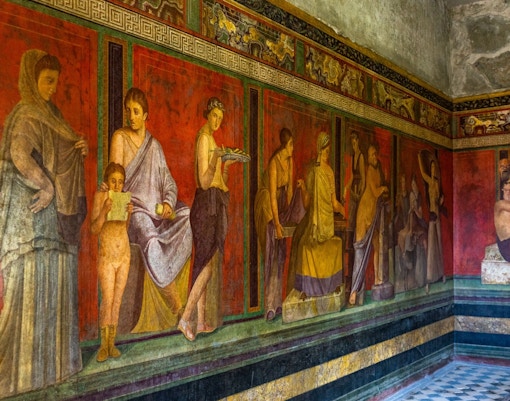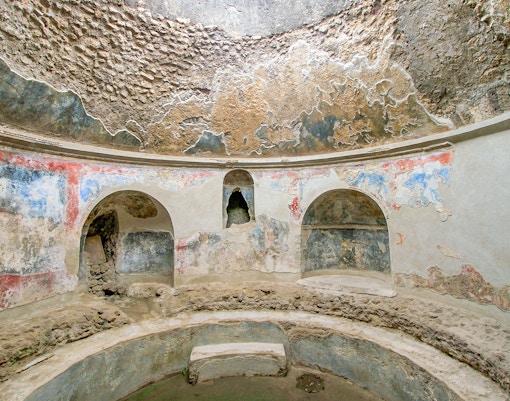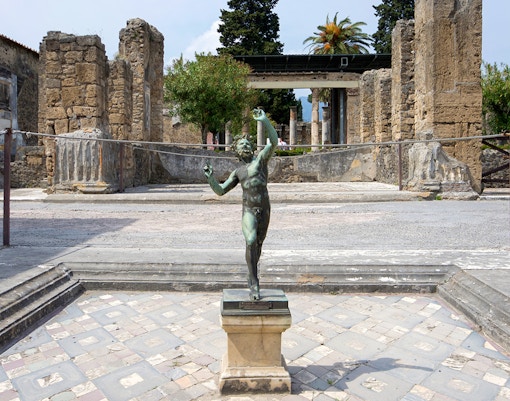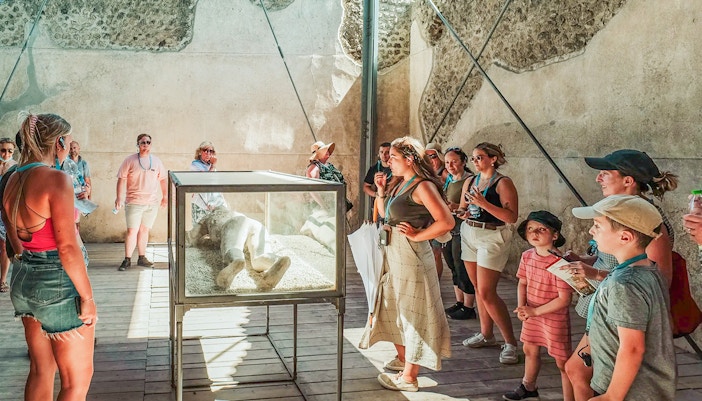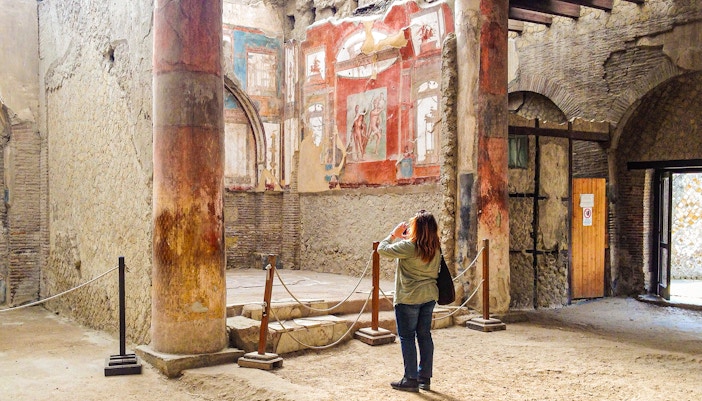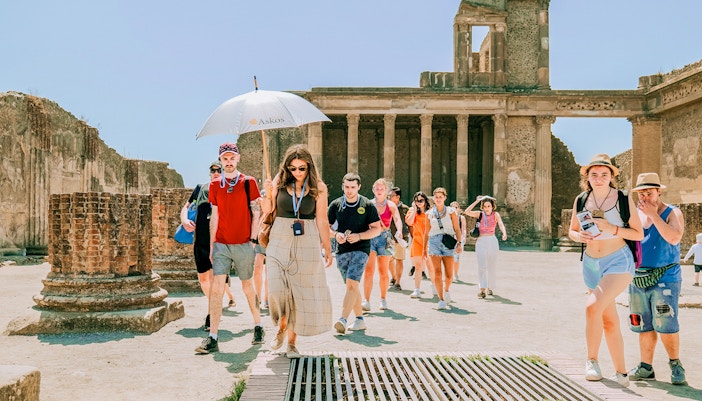Best for: Independent travelers, flexible pacing, relaxed exploration
Duration: 1 day or split over 2 days
If doing in one day:
- 9am — Arrive at Pompeii (Circumvesuviana train → Pompei Scavi – Villa dei Misteri stop; entrance is 2 mins away)
- 9:15am–12pm — Explore Pompeii highlights
Forum, Baths, Amphitheater, plaster casts - 12:15pm — Take Circumvesuviana to Ercolano Scavi (approx. 20 minutes)
- 1pm–2pm — Lunch near Herculaneum
- 2:10pm–3:45pm — Visit Herculaneum
Wooden beams, upper floors, boathouses, frescoes - 4pm — Return via train to Naples/Sorrento
If splitting across two days:
Do Pompeii Day 1 and Herculaneum Day 2 to avoid fatigue and go deeper.
Why it works:
You control timing & pacing; train links are simple and frequent.
Pro tip:
Start with Pompeii (larger site = more energy needed), then enjoy Herculaneum’s smaller scale comfortably afterward.
Recommended tours:
